OPD EASY-tablets
Synonym(s):1,2-Phenylenediamine tablet;OPD;OPD Peroxidase Substrate;OPD Tablet
- CAS NO.:615-28-1
- Empirical Formula: C6H10Cl2N2
- Molecular Weight: 181.06
- MDL number: MFCD00012966
- EINECS: 210-418-7
- SAFETY DATA SHEET (SDS)
- Update Date: 2024-12-18 14:15:32

What is OPD EASY-tablets?
Chemical properties
white to light pink powder
The Uses of OPD EASY-tablets
o-Phenylenediamine is a peroxidase substrate suitable for use in ELISA procedures. The substrate produces a soluble end product that is orange-brown in color and can be read spectrophotometrically at 450 nm. The OPD reaction may be stopped with 3 N HCl or 3 M H2SO4 and read at 492 nm.
The Uses of OPD EASY-tablets
o-Phenylenediamine is a peroxidase substrate suitable for use in ELISA procedures. The substrate produces a soluble end product that is orange-brown in color and can be read spectrophotometrically at 450 nm. The OPD reaction may be stopped with 3 N HCl or 3 M H2SO4 and read at 492 nm.
The Uses of OPD EASY-tablets
o-Phenylenediamine dihydrochloride has been used as a substrate for horseradish-peroxidase-conjugated secondary antibody in enzyme-linked immunosorbent assay (ELISA).
General Description
Brownish-yellow crystals. Slightly soluble in water. Used in the manufacture of dye.
Air & Water Reactions
Slightly soluble in water.
Reactivity Profile
Acidic organic/inorganic salts, such as OPD EASY-tablets, are generally soluble in water. The resulting solutions contain moderate to high concentrations of hydrogen ions and have pH's of less than 7.0. They react as acids to neutralize bases. These neutralizations generate heat, but less or far less than is generated by neutralization of inorganic acids, inorganic oxoacids, and carboxylic acid. They usually do not react as either oxidizing agents or reducing agents but such behavior is not impossible. Many of these compounds catalyze organic reactions.
Purification Methods
Crystallise the salt from dilute HCl (60mL conc HCl, 40mL water, with 2g stannous chloride), after treatment of the hot solution with charcoal by adding an equal volume of conc HCl and cooling in an ice-salt mixture. The crystals are washed with a small amount of conc HCl and dried in a vacuum desiccator over NaOH. [Beilstein 13 IV 38.]
Properties of OPD EASY-tablets
| Melting point: | 258 °C (dec.)(lit.) |
| storage temp. | 2-8°C |
| solubility | H2O: 1 tablet/10 mL, clear, colorless |
| form | tablet |
| color | white to off-white |
| PH | 1.5 |
| Water Solubility | Slightly soluble in water; freely soluble in alcohol, chloroform or ether |
| BRN | 3912045 |
| Stability: | Stable. Incompatible with strong oxidizing agents. |
| IARC | 2B (Vol. 123) 2020 |
| EPA Substance Registry System | 1,2-Phenylenediamine dihydrochloride (615-28-1) |
Safety information for OPD EASY-tablets
| Signal word | Danger |
| Pictogram(s) |
 Corrosion Corrosives GHS05  Exclamation Mark Irritant GHS07  Health Hazard GHS08  Environment GHS09 |
| GHS Hazard Statements |
H302:Acute toxicity,oral H317:Sensitisation, Skin H318:Serious eye damage/eye irritation H335:Specific target organ toxicity, single exposure;Respiratory tract irritation H341:Germ cell mutagenicity H351:Carcinogenicity H411:Hazardous to the aquatic environment, long-term hazard |
| Precautionary Statement Codes |
P273:Avoid release to the environment. P280:Wear protective gloves/protective clothing/eye protection/face protection. P301+P312:IF SWALLOWED: call a POISON CENTER or doctor/physician IF you feel unwell. P302+P352:IF ON SKIN: wash with plenty of soap and water. P305+P351+P338:IF IN EYES: Rinse cautiously with water for several minutes. Remove contact lenses, if present and easy to do. Continuerinsing. P308+P313:IF exposed or concerned: Get medical advice/attention. |
Computed Descriptors for OPD EASY-tablets
New Products
(S)-3-Aminobutanenitrile hydrochloride 4-Methylphenylacetic acid N-Boc-D-alaninol N-BOC-D/L-ALANINOL Tert-butyl bis(2-chloroethyl)carbamate 3-Morpholino-1-(4-nitrophenyl)-5,6-dihydropyridin- 2(1H)-one Furan-2,5-Dicarboxylic Acid Tropic acid 1-Bromo-3,5-Di-Tert-Butylbenzene S-2-CHLORO PROPIONIC ACID ETHYL ISOCYANOACETATE 2-Bromo-1,3-Bis(Dimethylamino)Trimethinium Hexafluorophosphate 4-IODO BENZOIC ACID 3-NITRO-2-METHYL ANILINE 1-(2,4-DICHLOROPHENYL) ETHANAMINE (2-Hydroxyphenyl)acetonitrile 4-Bromopyrazole 2-(Cyanocyclohexyl)acetic acid 4-methoxy-3,5-dinitropyridine 1-(4-(aminomethyl)benzyl)urea hydrochloride 2-aminopropyl benzoate hydrochloride diethyl 2-(2-((tertbutoxycarbonyl)amino) ethyl)malonate tert-butyl 4- (ureidomethyl)benzylcarbamate Ethyl-2-chloro((4-methoxyphenyl)hydrazono)acetateRelated products of tetrahydrofuran
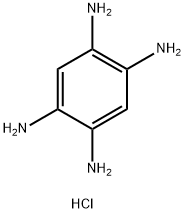
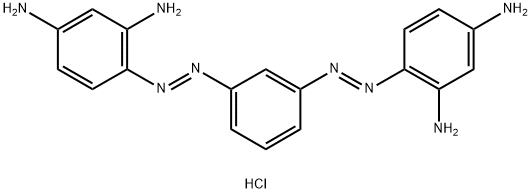


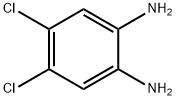
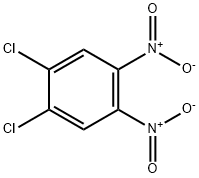

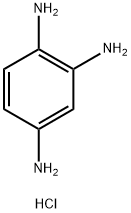
You may like
-
 o-Phenylenediamine Dihydrochloride (OPD.2HCl) extrapure AR CAS 615-28-1View Details
o-Phenylenediamine Dihydrochloride (OPD.2HCl) extrapure AR CAS 615-28-1View Details
615-28-1 -
 1,2-Phenylenediamine Dihydrochloride CAS 615-28-1View Details
1,2-Phenylenediamine Dihydrochloride CAS 615-28-1View Details
615-28-1 -
 O-Phenylenediamine diHCl 97% CAS 615-28-1View Details
O-Phenylenediamine diHCl 97% CAS 615-28-1View Details
615-28-1 -
 o-Phenylene diamine dihydrochloride CAS 615-28-1View Details
o-Phenylene diamine dihydrochloride CAS 615-28-1View Details
615-28-1 -
![1,2-Phenylenediamine Dihydrochloride [for Biochemical Research] CAS 615-28-1](https://img.chemicalbook.in//Content/image/CP5.jpg) 1,2-Phenylenediamine Dihydrochloride [for Biochemical Research] CAS 615-28-1View Details
1,2-Phenylenediamine Dihydrochloride [for Biochemical Research] CAS 615-28-1View Details
615-28-1 -
 o-Phenylenediamine dihydrochloride CAS 615-28-1View Details
o-Phenylenediamine dihydrochloride CAS 615-28-1View Details
615-28-1 -
 o-Phenylenediamine dihydrochloride CAS 615-28-1View Details
o-Phenylenediamine dihydrochloride CAS 615-28-1View Details
615-28-1 -
 SIGMAFAST™ OPD CASView Details
SIGMAFAST™ OPD CASView Details